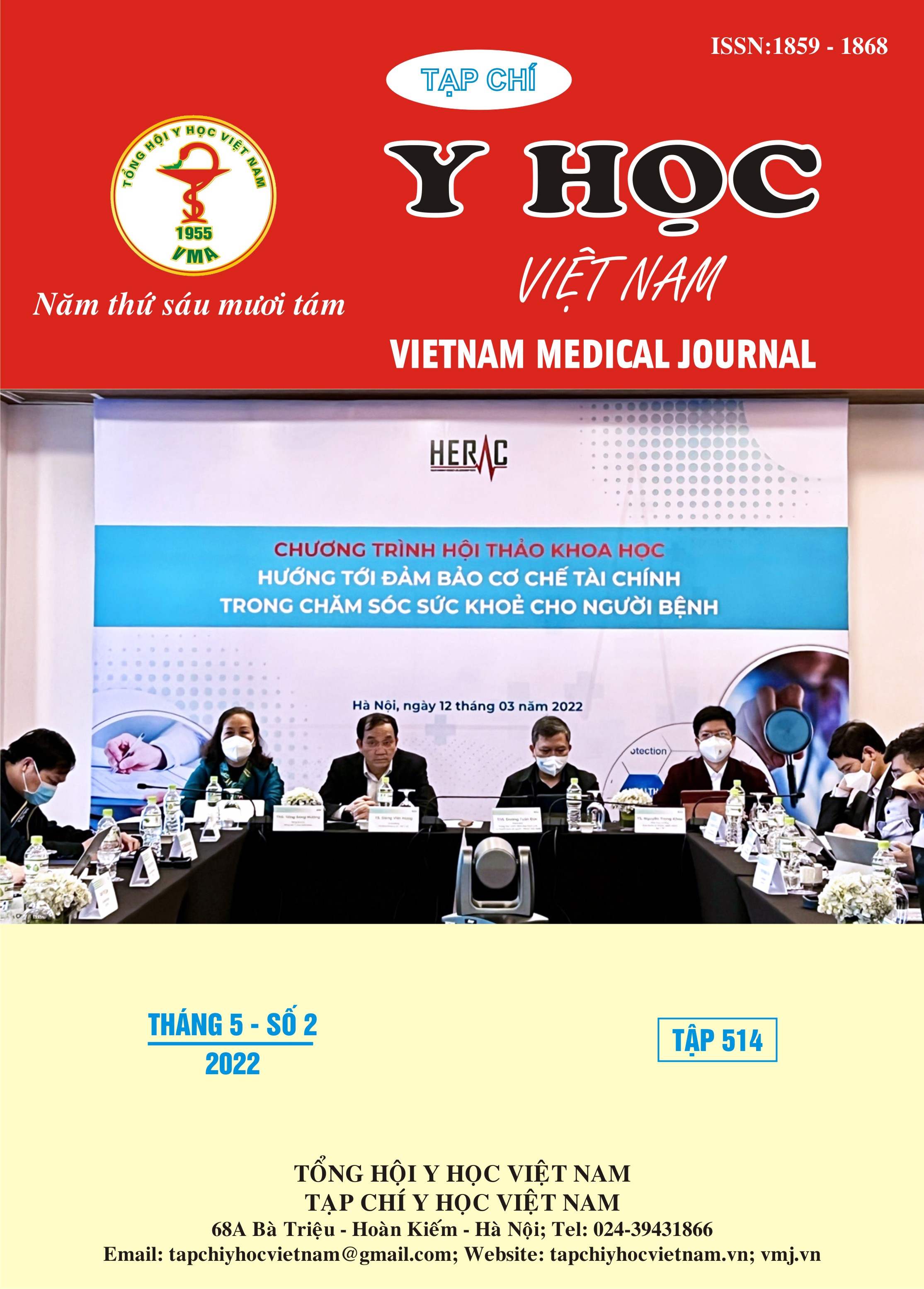THE ROLE OF MINIMALLY INVASIVE LATERAL THORACOTOMY IN LOBECTOMY WITH LYMPH NODE DISSECTION TREATMENT OF NON-SMALL CELL LUNG CANCER
Main Article Content
Abstract
Background: Using minimally invasive lateral thoracotomy in thoracic surgery in general and lobectomy for non-small cell lung cancer in particular still plays an important role. Methods: Descriptive, retrospective study: From January 2015 to December 2016, 93 patients underwent lobectomy – node dissection for non-small cell lung cancer by minimally invasive lateral thoracotomy at Viet Duc University Hospital. Results: Male/female ratio = 1,7 and mean age was 56,87±10,9 (from 15 to 76 years old). Average operative time 155.10 ± 38.5 minutes, 3 patients required intraoperative blood transfusion (3,23%), chest tube time 4,94 ± 2,09 days, hospital stay 9,91± 3,03 days, post-operative complications 10,8%. Normal and almost normal function of shoulder joint was 39,1% and 52,4%; 100% of patients were satisfied and very satisfied with the aesthetic of the incision after surgery. Conclusion: Minimally invasive thoracotomy without cutting chest wall muscles plays a good role in the surgical treatment of non-small cell lung cancer in parallel with video-assisted thoracoscopic surgery with some confirmed advantages on postoperative pain relief, shoulder function, cosmetic and training.
Article Details
Keywords
minimally invasive lateral thoracotomy, non-small cell lung cancer, lobectomy
References
2. Wang Z., Pang L., Tang J., et al. (2019). Video-assisted thoracoscopic surgery versus muscle-sparing thoracotomy for non-small cell lung cancer: a systematic review and meta-analysis. BMC Surg, 19(1), 144.
3. Deboever N., Mitchell K.G., Feldman H.A., et al. (2022). Current Surgical Indications for Non-Small-Cell Lung Cancer. Cancers (Basel), 14(5), 1263.
4. Dumitrescu M., Bobocea A., and Cordos I. (2017). Muscle sparing lateral thoracotomy: the standard incision for thoracic procedures. J Clin Invest Surg, 2(1), 60–65.
5. Khan I.H., McManus K.G., McCraith A., et al. (2000). Muscle sparing thoracotomy: a biomechanical analysis confirms preservation of muscle strength but no improvement in wound discomfort. European Journal of Cardio-Thoracic Surgery, 18(6), 656–661.
6. Usuda K., Maeda S., Motomo N., et al. (2017). Pulmonary Function After Lobectomy: Video-Assisted Thoracoscopic Surgery Versus Muscle-Sparing Mini-thoracotomy. Indian J Surg, 79(6), 504–509.
7. Nutt A.E., Knowles T.G., Nutt N.G., et al. (2021). Influence of muscle‐sparing lateral thoracotomy on postoperative pain and lameness: A randomized clinical trial. Veterinary Surgery, 50(6), 1227–1236.
8. Kuritzky A.M., Aswad B.I., Jones R.N., et al. (2015). Lobectomy by Video-Assisted Thoracic Surgery vs Muscle-Sparing Thoracotomy for Stage I Lung Cancer: A Critical Evaluation of Short- and Long-Term Outcomes. J Am Coll Surg, 220(6), 1044–1053.
9. Li S., Feng Z., Wu L., et al. (2014). Analysis of 11 trials comparing muscle-sparing with posterolateral thoracotomy. Thorac Cardiovasc Surg, 62(4), 344–352.


